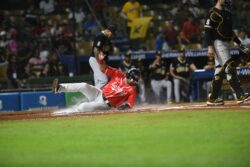This is a column from the February 6, 2014 edition of The Georgetown Voice. It can be found here
Major League Baseball did its part to help reduce the United States’ trade deficit before the end of 2013 by developing and executing a new posting system for Japanese players being traded out of Nippon Professional Baseball to American teams. The two organizations agreed that the posting price for a Japanese player cannot exceed $20 million, moving away from the former system in a big way.
This new rule certainly does not favor the Japanese clubs in NPB, which makes it surprising that it would agree to the deal in the first place. In the past, Japanese clubs could charge exorbitant amounts of money in order for MLB teams to even have the chance to offer a contract to a player up for trade. The most egregious examples were Daisuke Matsuzaka in 2006 and Yu Darvish in 2011, who were both acquired after posting fees over $50 million. To be perfectly clear, these amounts are not contracts with the players. NPB clubs first receive the payments. On top of that, MLB clubs had to offer a contract to the players. Both Matsuzaka and Darvish were given six-year contracts above $50 million after the posting fees were agreed upon.
The new cap for posting fees may not make NPB general managers very happy, but it will definitely increase the flow of talented Japanese baseball players to American clubs while reducing some of the risk that comes with signing them. The main risk associated with signing a star Japanese recruit is a lack of MLB experience. Teams must have a massive amount of faith to pay large amounts of cash to reach deals with these Japanese players. The new posting fee limits wisely reduces some of that risk by making sure that no team can pay a fee higher than $20 million.
This new system gives hope to smaller market teams in the MLB who before could not match the league’s biggest spenders when trying to bid on Japanese players. This deal also means that the players themselves will most likely be receiving higher contract deals than before since teams do not have to part with so much money just to pay posting fees. In the end, it’s less money for NPB clubs and more money for the individual players, which means Japanese teams will be less willing to post players and Japanese players more eager to be posted. And here we reach our problem.
Despite Japanese fans’ excitement over seeing their players make it big and succeed in the MLB, I cannot trust that Japanese players will receive support in leaving their Japanese teams for a career in the MLB. This new agreement is only good for the next three years, and after that time is up, it will need to be renegotiated. My prediction is that Japanese clubs will be tired of the $20 million mark before we are halfway through the agreement’s maturity. Parting ways with their best players means less of an opportunity for profits and victories, and since these clubs know that American teams in the past have been willing to cough up amounts that dwarf this new cap, it will not be long before Japanese general managers are calling for a raise.
The biggest news to come out of the new posting agreement so far has been the seven-year $155 million signing of Masahiro Tanaka by the New York Yankees. So much for small-market teams having a fairer chance. His contract ranks fifth all-time in size after going 24-0 with a 1.27 earned run average for the Rakuten Golden Eagles last season. Although it may not last for longer than three years, we can at least look forward to more acquisitions in the off-season and a new pool of talent for MLB teams to select from when building up their rosters. Tanaka is a perfect example of the kind of boost teams are now more easily able to access through the international market.
The first big signing after the new posting limit was set may have not gone to a small-market team as many had hoped would result from the change, but with more Japanese players feeling the urge to try their skills in the United States, we should be seeing some more diversified rosters throughout the MLB and maybe even a team other than the Yankees making headlines for once.





